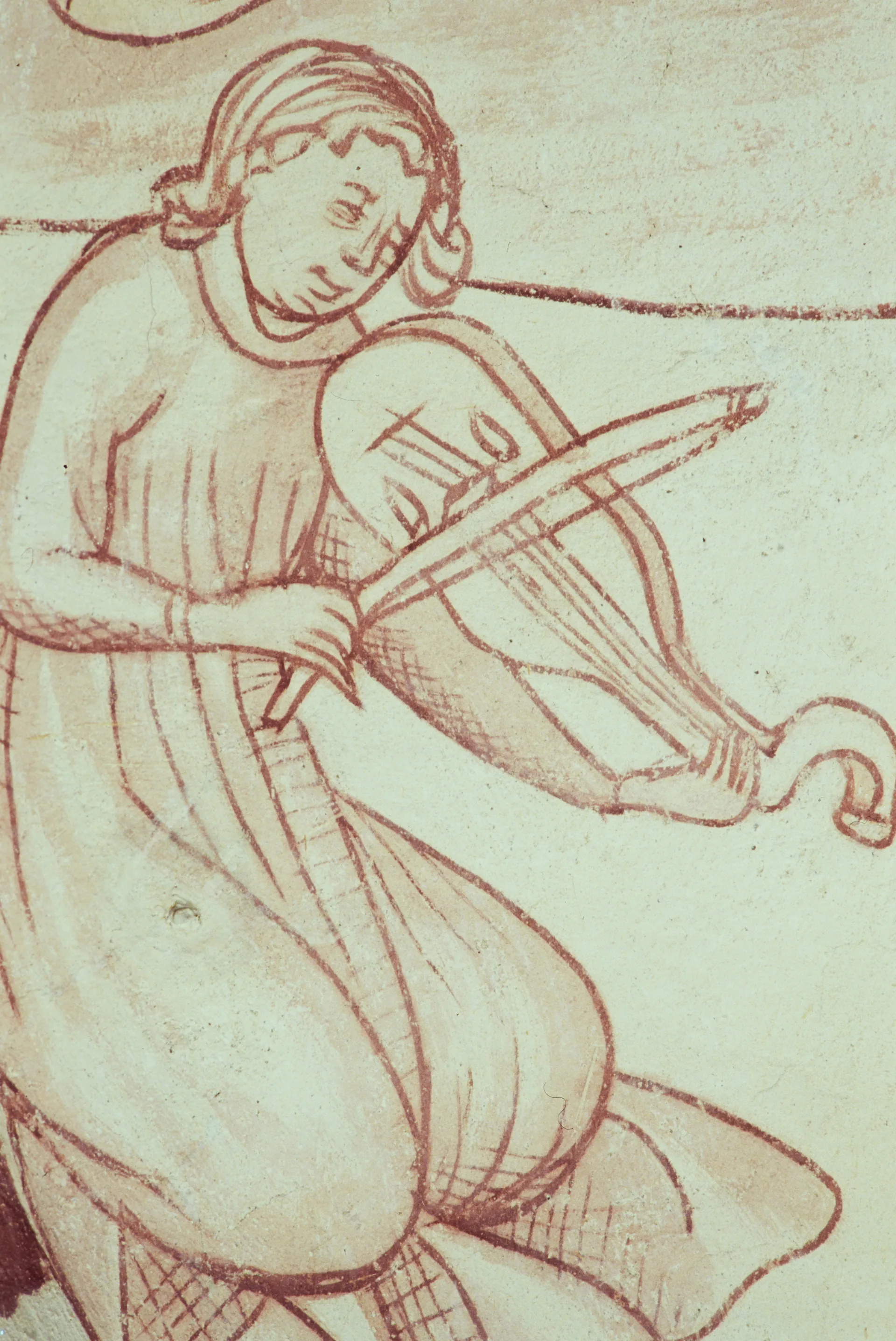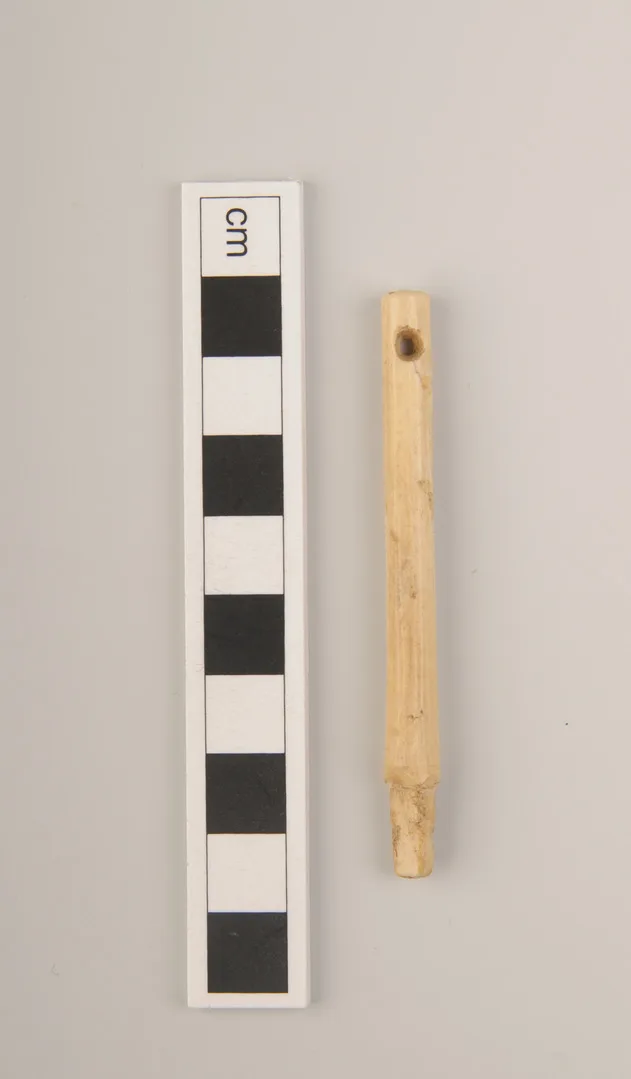Music in the Middle Ages
Viking Age
AD 800 – AD 1100
Middle Ages
AD 1050 – AD 1520
Modern Age
AD 1520 – AD 2025
Jaw harps and bone flutes are fairly common archaeological finds. String instruments are rarer, as they were made of wood. A preserved tuning peg from Skänninge may have belonged to a fiddle or a rebec, an early predecessor of the violin.


Flute
From Vreta Abbey, Östergötland.
On view at Historiska museet in the exhibition Vikingarnas världFind this object in display 44, Vikingarnas värld Monter 44

A tuning key
From Skänninge, Östergötland.
On view at Historiska museet in the exhibition Medeltida liv
The status of musicians
Minstrels often had very low social status and few rights. They were itinerant performers skilled in multiple instruments. A typical combination was a one-handed flute and drum, and they are often shown playing the fiddle. Minstrels performed in villages in exchange for food, after which they had to move on.

Bell ringing
Many of today’s bell-ringing traditions date back to the early Middle Ages. Church bells are mentioned as early as the end of the Viking Age, during the Christianisation period. Bells primarily called people to worship, but ringing also became a symbol of the spread of Christianity.
Priests carried handbells during rural ceremonies and processions. However, little is known about their exact appearance or use. A type of small bell was introduced in the early 13th century for brief ringing during Mass, when the bread and wine were believed to transform into the body and blood of Christ. These were usually small bells hanging in the chancel, known as sanctus bells, but it’s unclear if handbells were used similarly.
The handbell from Täby
In spring 2002, a private individual in Täby discovered a small bronze bell while digging in their garden. The bell was handed over to the Swedish History Museum for assessment.
It was a tiny bronze bell topped with a cross-shaped handle, suggesting a religious context. The bell measured just 58 millimetres in height, with the cross about 33 millimetres. While the circumstances of the find don’t reveal its age, its shape, similar to early “beehive-shaped” church bells, suggests it may date from the early Middle Ages.
This unique handbell is now a part of the museum collections; the finder was pleased that it has become part of Sweden’s cultural heritage.

Handbell
From Täby, Uppland.







